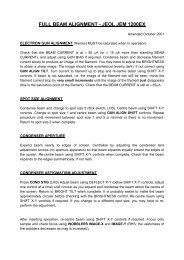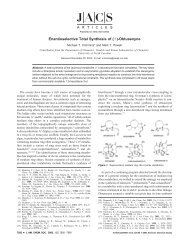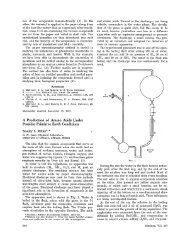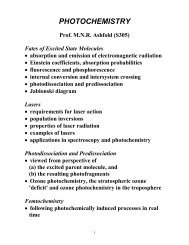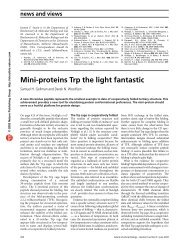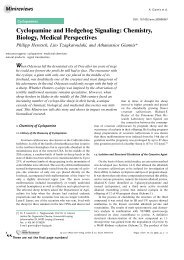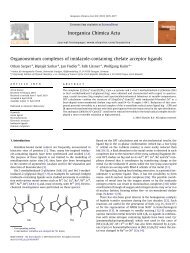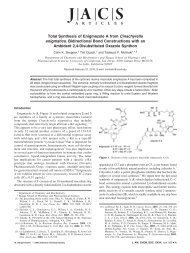Reduced Sensitivity RDX (RS-RDX) Part I: Literature Review and ...
Reduced Sensitivity RDX (RS-RDX) Part I: Literature Review and ...
Reduced Sensitivity RDX (RS-RDX) Part I: Literature Review and ...
Create successful ePaper yourself
Turn your PDF publications into a flip-book with our unique Google optimized e-Paper software.
<strong>Reduced</strong> <strong>Sensitivity</strong> <strong>RDX</strong> (<strong>RS</strong>-<strong>RDX</strong>) <strong>Part</strong> I:<br />
<strong>Literature</strong> <strong>Review</strong> <strong>and</strong> DSTO Evaluation<br />
Executive Summary<br />
Cyclotrimethylene trinitramine (<strong>RDX</strong>) is the most widely used crystalline high<br />
explosive in military applications. The vast majority of in-service high explosives<br />
across all applications contain <strong>RDX</strong>. Its advantages include respectable performance,<br />
reasonable insensitivity, ease of manufacture <strong>and</strong> acceptable low cost. Whilst many<br />
other explosive ingredients have been developed <strong>and</strong> occasionally adopted (typically<br />
for specialised applications), this excellent balance of performance, safety <strong>and</strong><br />
economic factors has not been replicated or exceeded.<br />
With most western defence forces now having a policy that requires the procurement<br />
of ordnance that complies with Insensitive Munitions (IM) protocols, there is<br />
considerable interest in developing high explosives that assist in meeting this goal.<br />
Consequently, much research has been directed to producing powerful but less<br />
sensitive explosives. Recently it has been discovered that certain existing<br />
manufacturing methods for <strong>RDX</strong> produce a grade of <strong>RDX</strong> that has additional benefits<br />
above the accepted norm. Specifically, the grades referred to as <strong>Reduced</strong> <strong>Sensitivity</strong><br />
<strong>RDX</strong>s show reduced shock sensitivity in cast polymer bonded explosives (PBXs). This<br />
property is of considerable importance when designing a munition to pass a<br />
sympathetic detonation test such as the Stack Test. The implications for IM compliance<br />
are significant, especially as sympathetic detonation is perhaps the most difficult test to<br />
pass (particularly for larger ordnance items). The ‘no additional cost’ aspect of this<br />
development makes it more likely to be rapidly accepted <strong>and</strong> adopted.<br />
This report examines the current status of research <strong>and</strong> development into <strong>Reduced</strong><br />
<strong>Sensitivity</strong> <strong>RDX</strong> (<strong>RS</strong>-<strong>RDX</strong>) by way of literature review. The findings of the DSTO<br />
research programme are examined in detail <strong>and</strong> include formal reporting of major<br />
progress in this area.



